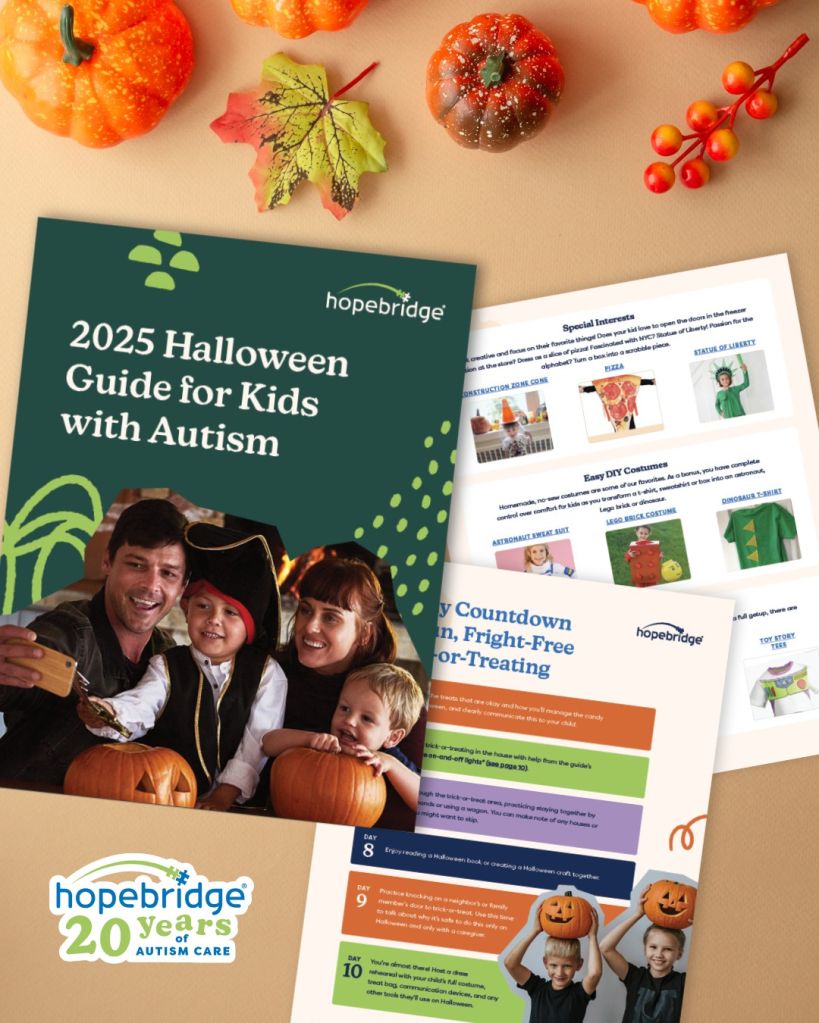Hopebridge Releases Autism Safety Guide for Halloween

INDIANAPOLIS — As families prepare for Halloween, Hopebridge Autism Therapy Centers, a leading pediatric therapy provider, is encouraging caregivers to take proactive steps to ensure the holiday is safe and fun for children with Autism Spectrum Disorder (ASD).
Halloween’s bright lights, loud noises, and unfamiliar costumes can pose sensory challenges for children with autism. Hopebridge, headquartered in Indianapolis, has released a guide with practical strategies to help children with ASD navigate the holiday’s unique traditions.
Hopebridge’s recommendations focus on gradual exposure and familiarization to minimize anxiety and prevent meltdowns:
Sensory-Friendly Costumes: Caregivers should buy or make costumes that are sensory-friendly and have the child wear them around the house prior to Halloween to get familiar with the textures.
Practice Social Scripts: Practice communicating phrases like “trick-or-treat” and “thank you” with neighbors or family friends ahead of time.
Walk the Route: Take a walk along the planned trick-or-treat route before Halloween night to help the child become familiar with the neighborhood environment.
Limit Exposure: For a child’s first time participating, it may be beneficial to limit the time spent outside or the number of houses visited to prevent overstimulation. Caregivers are advised to check in with their child frequently.
In addition to preparation, Hopebridge stresses the importance of safety measures, particularly when navigating unfamiliar situations:
Trusted Company: Ensure children with autism are always with a family member or trusted individual while trick-or-treating.
Familiar Devices: Have familiar communication devices and sensory toys available to increase comfort in an unknown environment.
The Blue Bucket Signal: Caregivers are encouraged to use blue buckets as a visible indicator that the child may have autism and may need more patience in certain scenarios.
Contact Information: For safety, caregivers should write their contact information on the child’s bucket.
“Despite the spooky nature of the holiday, Halloween does not need to be a scary or overstimulating experience,” said Jana Sarno, Chief Clinical Officer at Hopebridge. “It can be a night that is fun and exciting for all individuals if the correct safety precautions are put in place ahead of time. Proactive thinking will allow your child with ASD to join in on the fun of Halloween.”
Hopebridge has created a downloadable Halloween guide with additional advice for families as they prepare for the holiday. You can find details here: https://www.hopebridge.com/halloween-guide/










